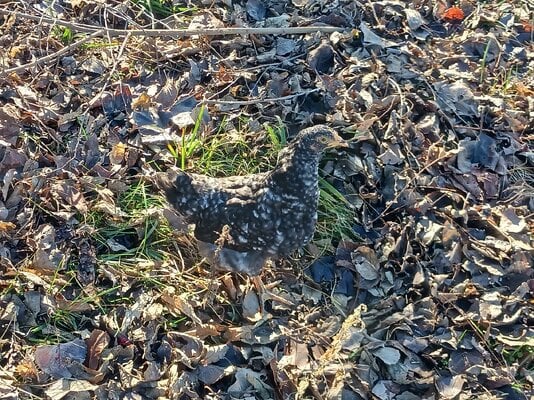@EddieSalita
@Perris
@U_Stormcrow
I'd like to start a discussion about adaptive breeding for chickens.
Basically, a landrace is a locally adapted variety which has enough genetic diversity to adapt to changing conditions. Landraces are often different even just a few miles apart, and the inbred "varieties" that we have become used to were once landraces.
My goal is to create a dual purpose landrace bird that thrives on forage, can out-compete predator pressure, makes excellent parents and is non-aggressive to humans and flock mates. I eventually want a bird that can thrive without human help if necessary.
Color and pattern doesn't matter to me, but since white seems to be a predator magnet I made the decision not to include white birds. All my birds are mottled or dark.
Please add people who might be interested in the discussion.
This is what chick camoflage should be!

@Perris
@U_Stormcrow
I'd like to start a discussion about adaptive breeding for chickens.
Basically, a landrace is a locally adapted variety which has enough genetic diversity to adapt to changing conditions. Landraces are often different even just a few miles apart, and the inbred "varieties" that we have become used to were once landraces.
My goal is to create a dual purpose landrace bird that thrives on forage, can out-compete predator pressure, makes excellent parents and is non-aggressive to humans and flock mates. I eventually want a bird that can thrive without human help if necessary.
Color and pattern doesn't matter to me, but since white seems to be a predator magnet I made the decision not to include white birds. All my birds are mottled or dark.
Please add people who might be interested in the discussion.
This is what chick camoflage should be!








